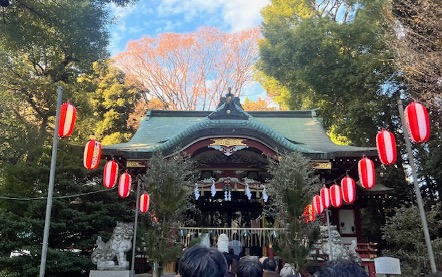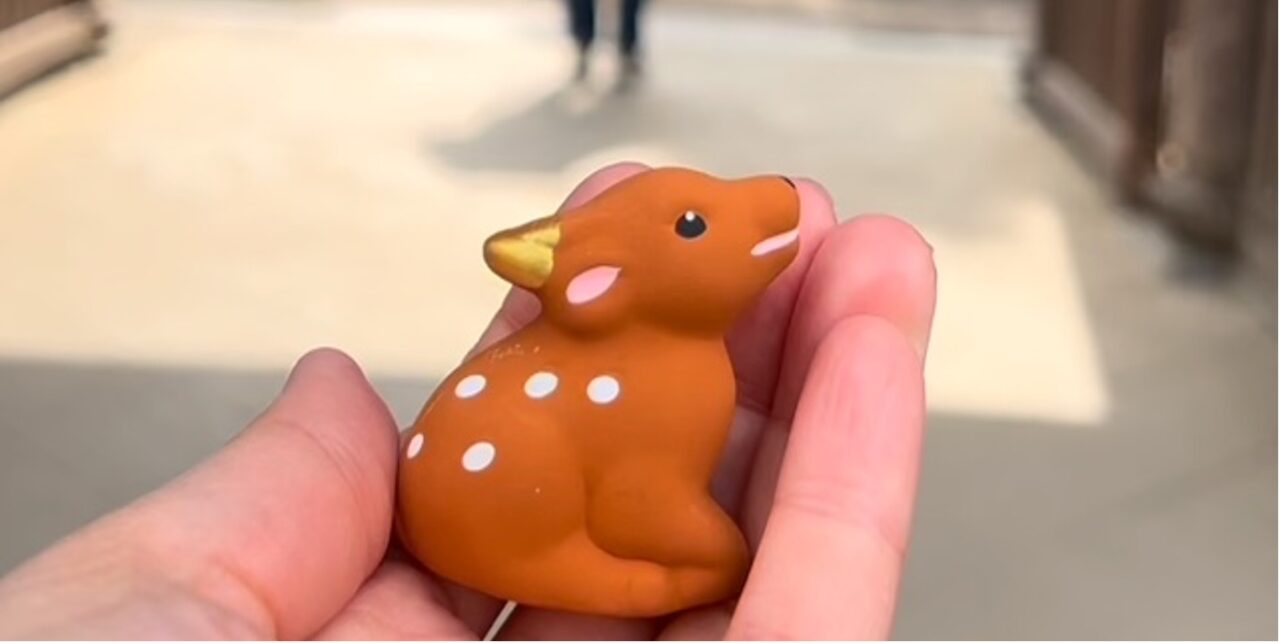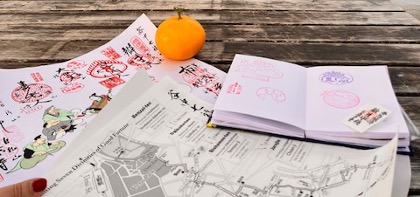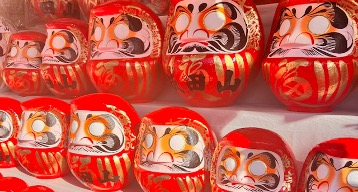My favorite beginning of the year traditions in Japan


Written by
Name: Andra
Country of origin: Romania
How long you’ve lived in Japan: Fully in Japan since Feb 2023 (resident since Sept 2022)
Where you live in Japan: Tokyo
Instagram
Living in Japan feels like a constant way to celebrate, especially when it comes to the seasonal events and traditions. January and February are packed with unique celebrations that not only mark the start of a new year but also bring people together in heartwarming (and sometimes hilarious) ways. As an expat trying to embrace the culture, I’m always researching and trying to find ways of attending these events. My Japanese friends sometimes say I know more about them than them. Let me walk you through how I’ve celebrated these traditions and share some tips to make your experience even better.
Hatsumōde (初詣): Starting the year off right
Hatsumōde (初詣), or the first shrine visit of the year, is a big deal in Japan. Everyone heads to a shrine to pray for good luck, health, and success in the year ahead. It’s a beautiful tradition, but let me warn you—popular shrines like Meiji Jingu (明治神宮) in Tokyo can feel more crowded than Shibuya Crossing during rush hour.
This year, I decided to skip the chaos and went to Nakano Hikawa Shrine (中野氷川神社) instead. It’s a smaller, quieter shrine, and honestly, it was the best decision ever. No elbowing through crowds, no waiting in long lines, and I was actually able to hear myself think while tossing my coin into the offering box.
Pro tip for Hatsumōde:
- DO toss a coin into the offering box before making your wish.
- DO clap twice, bow deeply, and then make your wish.
- DON’T throw the coin like you’re in a basketball game. Trust me, I’ve seen it happen, and it’s not a good look.
- DON’T hog the prayer spot—there’s usually a line of people behind you.
I also bought an omamori (お守り, a good luck charm). They’re cute, affordable, and make a great souvenir. Just don’t throw them away when the year is over—take them back to a shrine for proper disposal. If you’ve visited a shrine before at New Year time, you may have seen a big fire. This is where the New Year decorations and old year items are burned.
Trying your luck with Omikuji (おみくじ)
Another fun part of visiting a shrine during Hatsumōde is drawing an omikuji (おみくじ), or fortune slip. For a small donation (usually 100-200 yen), you can draw a slip of paper that predicts your luck for the year. The fortunes range from “great blessing” (大吉, daikichi) to “great curse” (大凶, daikyō). Sometimes the slip comes inside a cute paper holder. My favorite so far was from Miyajima Island’s Daishōin Temple (大聖院). Check it out below:

This year, I nervously opened my omikuji and got “great blessing” (大吉, daikichi) for the first time ever! I was so happy—finally, a year that promises amazing luck! I’m keeping this one close as a token of positivity. If you get a good fortune, you can keep it as a token of luck. If your fortune isn’t so great, tie it to a designated rack or tree at the shrine to leave the bad luck behind. It’s a simple, fun way to start the year with a bit of suspense and hope.
Walking the Seven Lucky Gods Pilgrimage in Yanaka Ginza
Last year, I decided to level up my Hatsumōde experience by doing the Seven Lucky Gods pilgrimage (七福神めぐり) in Yanaka Ginza (谷中銀座). If you haven’t been to Yanaka Ginza, you’re missing out. It’s this charming, old-fashioned shopping street in Tokyo that feels like stepping back in time—with the bonus of amazing street food.
The pilgrimage involves visiting seven small temples dedicated to the Seven Lucky Gods (七福神, Shichifukujin). Each god represents a different type of good fortune:
- Ebisu (恵比寿) – The god of prosperity and fishermen.
- Daikokuten (大黒天) – The god of wealth and farmers.
- Bishamonten (毘沙門天) – The god of warriors and defense.
- Benzaiten (弁財天) – The goddess of knowledge, art, and beauty.
- Fukurokuju (福禄寿) – The god of longevity and wisdom.
- Hotei (布袋) – The god of happiness and contentment.
- Jurōjin (寿老人) – The god of long life.
It’s said that praying to all seven will bring you a well-rounded year of blessings. If I am honest, 2024 has been one of my best years recently, so I guess it does work!
As I wandered through Yanaka, munching on taiyaki (たい焼き, those fish-shaped cakes filled with sweet bean paste), I couldn’t help but feel like I was on a treasure hunt. By the end of the day, after walking almost 15 km, I was tired but ridiculously happy. Plus, I got to explore one of my favorite areas in Tokyo. If you’re looking for a mix of culture, history, and delicious snacks, this is the place to go!

The story of Daruma dolls: Setting your goals from the beginning of the year
Another popular tradition around this time is buying a Daruma doll (達磨). These round, red dolls with wide eyes are more than just decorations—they’re symbols of perseverance and goal-setting. When you buy a Daruma, its eyes are blank. You paint in the left eye while making a wish or setting a goal. The other eye stays blank until your goal is achieved, at which point you paint it in to show success.
Daruma dolls are said to represent Bodhidharma, the founder of Zen Buddhism, and their round shape symbolizes resilience—they always bounce back when knocked over. I bought one this year for the first time to help me achieve my goals! Now I just need to work hard so I can give my Daruma its second eye!

Coming of Age Day: Where to spot the most stylish Kimonos
Coming of Age Day, or Seijin no Hi (成人の日), is celebrated on the second Monday of January. It’s a day when 20-year-olds officially become adults, and they dress up in stunning kimonos for the occasion. The guys also wear traditional outfits called hakama (袴), which are formal, wide-legged trousers typically paired with a haori (羽織), a formal jacket. This outfit is part of traditional Japanese formal attire, often in darker colors like black, navy, or gray, sometimes with subtle patterns.
One of the best places to see the colorful kimonos and happy new adults is in front of Shinjuku Gyoen (新宿御苑) or Meiji Jingu (明治神宮). It’s like a fashion show, but with deep cultural meaning. The kimonos are works of art, with intricate patterns and vibrant colors, and the young men look pretty sharp in their hakama.
Setsubun (節分): The day I learned the benefits of throwing beans
Setsubun (節分), celebrated on February 3rd, is all about driving away evil spirits and bringing in good luck. The tradition involves throwing roasted soybeans (called mame, 豆) while shouting “Oni wa soto! Fuku wa uchi!” (鬼は外!福は内!, “Demons out! Luck in!”). It’s loud, messy, and ridiculously fun.
I attended the Setsubun event at my local shrine last year. They had a stage where people dressed as demons (鬼, oni) playfully ran around while everyone threw beans at them. It was like a game of dodgeball, but with snacks. The atmosphere was festive, with food stalls selling warm yakisoba (焼きそば) and taiyaki (たい焼き) to keep everyone energized.
After the bean-throwing, people scrambled to pick up as many beans as they could. Why? Because eating the same number of beans as your age is said to bring you good luck. Let’s just say I had a LOT of beans to eat, and I’m not complaining—they were pretty tasty.
Setsubun tips:
- DO join in the bean-throwing fun.
- DO eat your age in beans (or more if you’re feeling lucky).
- DON’T aim for someone’s face unless you want to make enemies.
Why these traditions matter?
As an expat, participating in these seasonal events has helped me feel more connected to Japan and its culture. They’re not just about traditions; they’re about community, laughter, and finding joy in the little things—like eating beans or hunting for temple stamps. I normally attend these events by myself, so it is a way for me to disconnect from my day-to-day life and just live in the moment.
If you’re new to Japan or just visiting during January and February, I highly recommend checking out these events. Don’t worry if you don’t know all the rules—people are usually understanding and happy to see you taking an interest in their culture. And if you mess up, just laugh it off. As long as you are respectful to the culture, trust me, all will be just fine!
So, what are your favorite seasonal traditions? Have you tried Hatsumōde, the Seven Lucky Gods pilgrimage, or bean-throwing on Setsubun? Let me know in the comments—or better yet, connect with me on Instagram and come join me next time!
